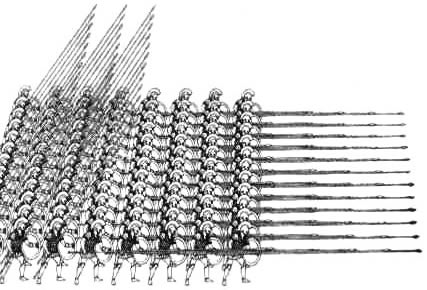Science of Conflict
Tactics of the Greeks-Macedonians
Tactics of the Greeks-Macedonians
In 343 BC.
when Alexander was thirteen his father King Philip assigned him a tutor
in science. King Philip believed that science was the guarantor of Greece's
future and appointed Aristotle to tutor the young Alexander. As a consequence
Alexander became history's first scientifically literate conqueror. Alexander's
great achievements were underpinned by science. Developments such as powerful
battering rams mounted on ships, catapults (parabolos)
that could fire huge rocks to a distance of 800 m, small catapults that
operated on compressed air and the most brilliant of all the ballista.
The ballista was a catapult, as pictured on the right, that sequentially
fired arrows without the need for rewinding torsion ropes after each arrow.
You may perceive this as the ancestor to the machinegun.
When Greece became part of the Roman Empire in 146 BC, the highly sophisticated Greek technology spread widely throughout the territories of Rome. The ballista was widely used for many years by Roman armies without modification.
When Greece became part of the Roman Empire in 146 BC, the highly sophisticated Greek technology spread widely throughout the territories of Rome. The ballista was widely used for many years by Roman armies without modification.

